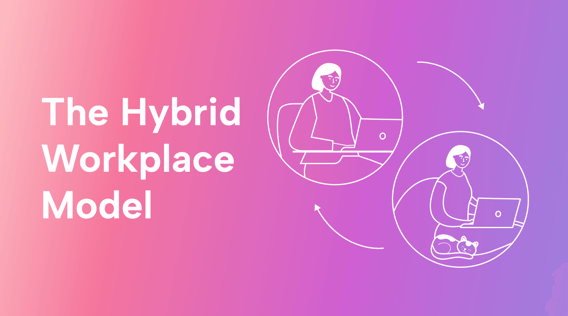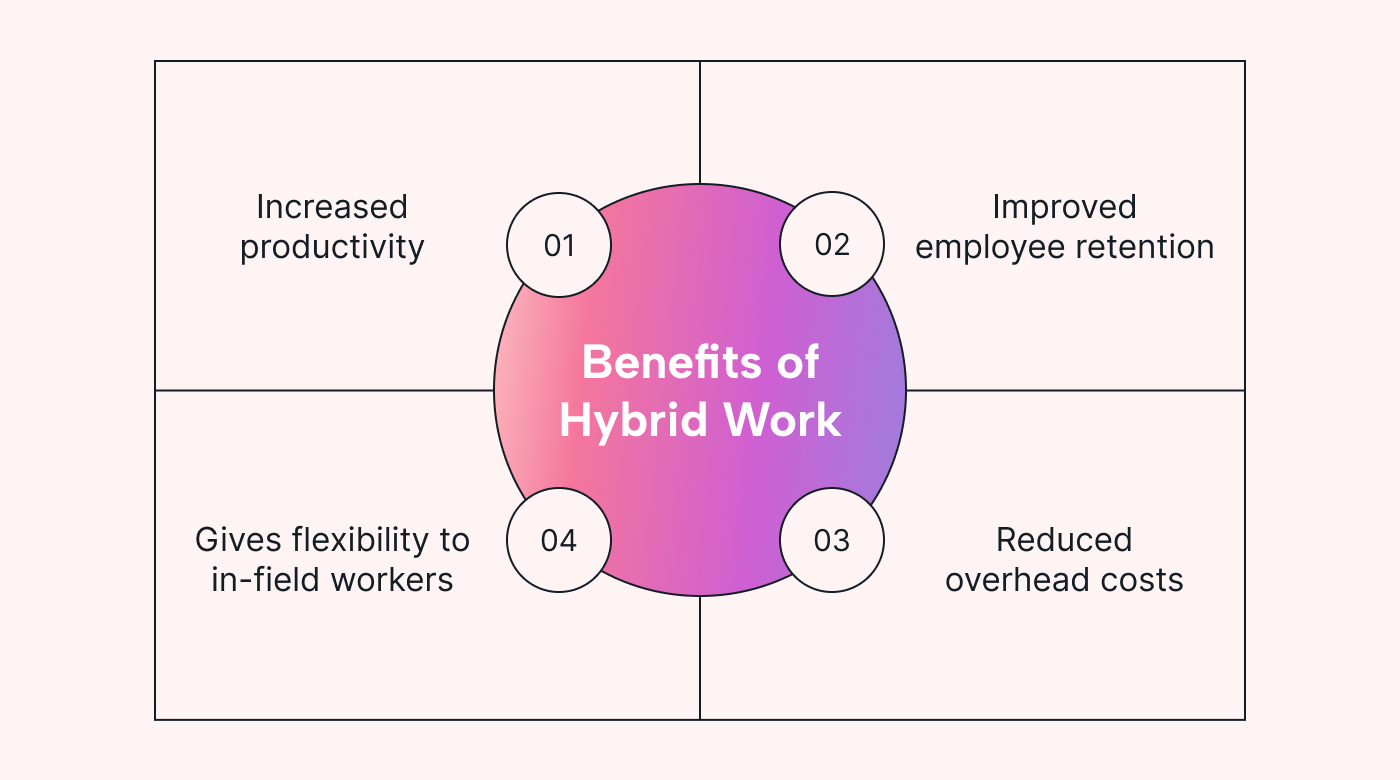Hybrid work models are not a fad. In fact, over 70% of US employers are now adopting some type of hybrid work model.
As with any shift in the status quo, adopting a hybrid approach brings unique challenges. Communication breakdowns, maintaining company culture, and ensuring consistent productivity with a dispersed workforce can make navigating the hybrid landscape tricky.
In this article, we discuss the most common types of hybrid workplace models, along with strategies for maximizing benefits and mitigating challenges for each.
What is a hybrid workplace model?
A hybrid workplace model blends in-office and remote work. Instead of tethering employees to their desks from nine to five, it gives them the flexibility to work from the office or from home — or any location they prefer.
With hybrid work, you get the best of both worlds: the camaraderie of the office and the comfort of being home.
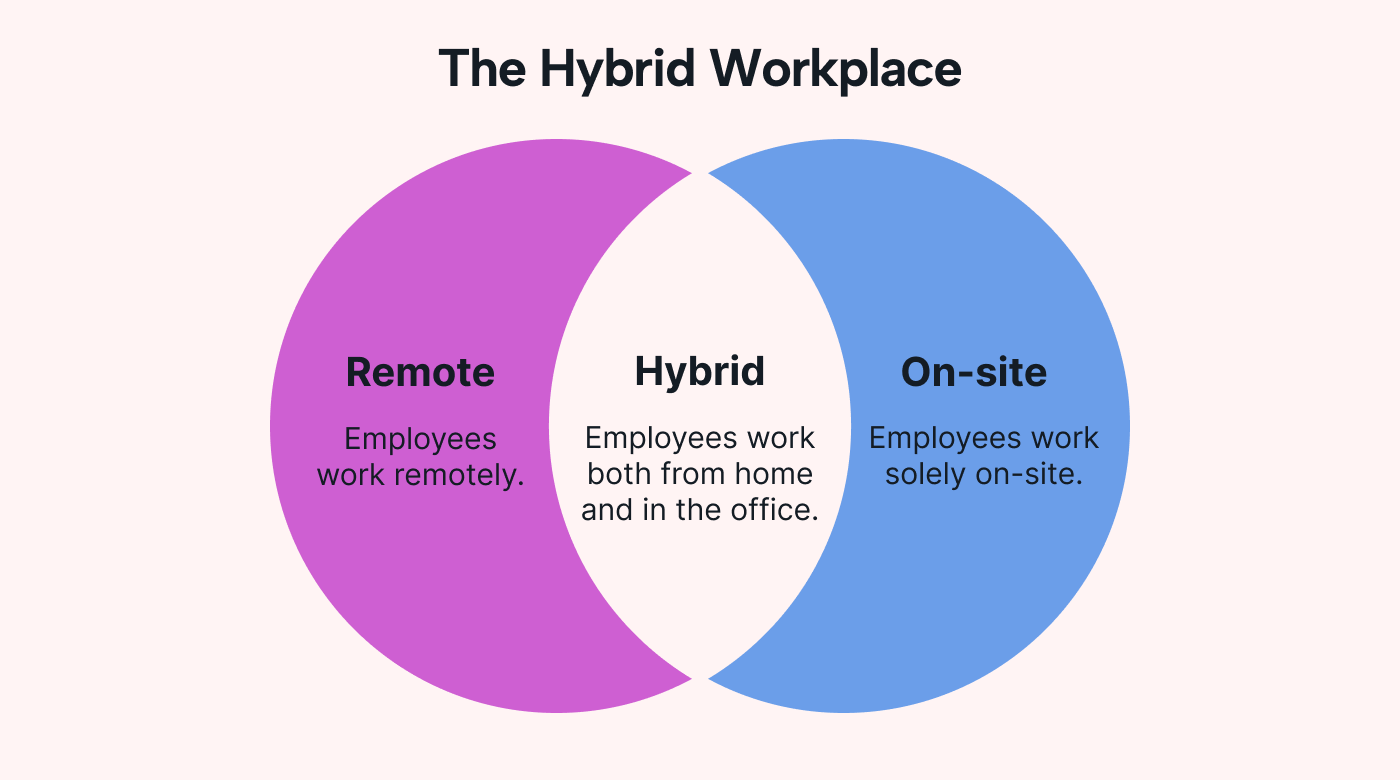 |
The hybrid trend isn’t exclusive to the US, either — 43% of companies worldwide have implemented a hybrid work schedule, with 17% opting for a fully remote workforce.
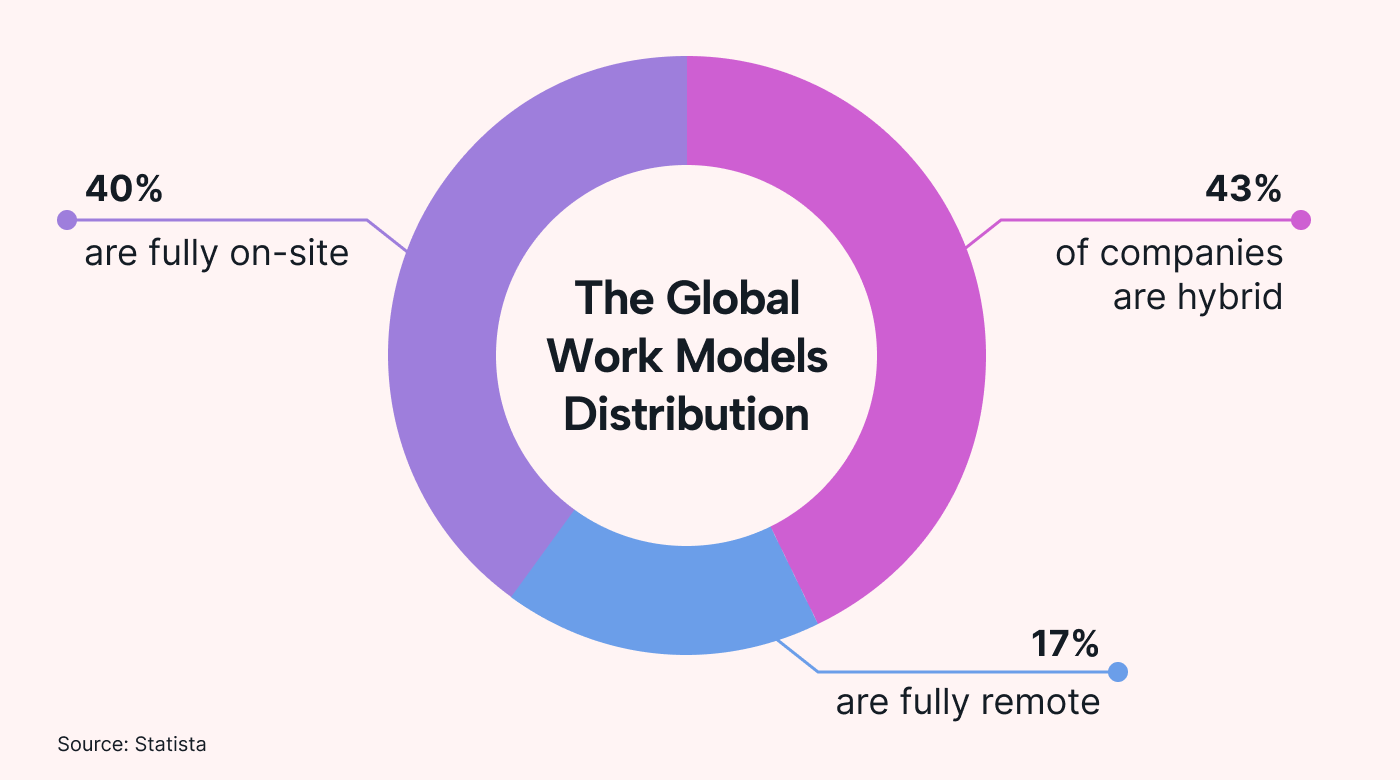 |
Types of hybrid work models
Each type of hybrid work model has unique characteristics, benefits, and challenges. Let’s break them down.
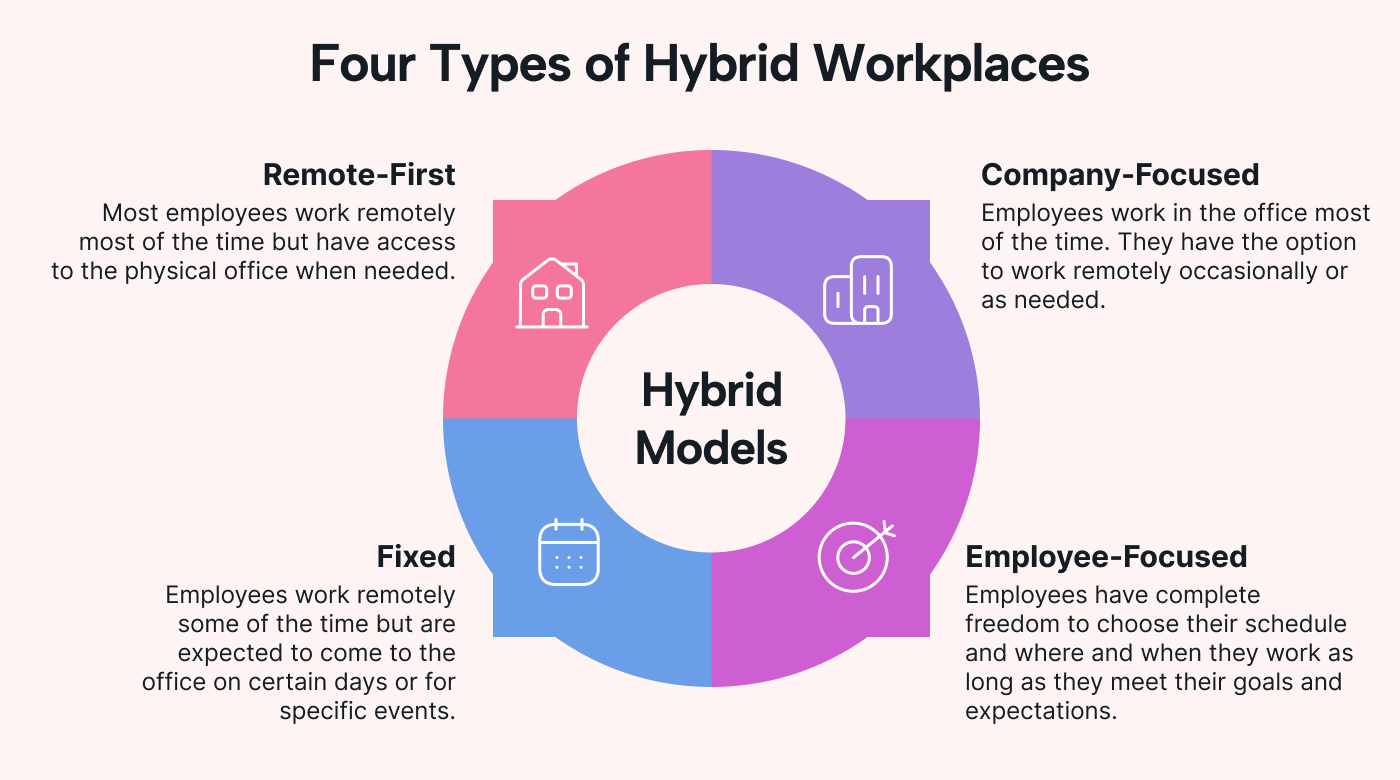 |
1. Remote-first hybrid workplace model
In the remote-first model, the default is, well, remote.
Remote employees primarily work from chosen locations, such as their homes, coffee shops, or co-working spaces. However, they aren’t disconnected from the physical office. They can pop in when needed, such as for a team-building event or a critical face-to-face meeting.
Example:
Imagine a software developer working on a new feature from their home in Denver but flying into the San Francisco office four times a year for their quarterly review.
Pros:
- Greater flexibility for employees
- Potential cost savings on office space and utilities
- Access to a broader talent pool without geographical constraints
Cons:
- Potential feelings of isolation among team members
- Challenges in fostering a cohesive company culture
- Possible communication barriers
2. Fixed hybrid workplace model
Here, there’s a bit more structure. Employees have designated days when they’re expected to be in the office. They also might need to come in for specific events.
Example:
Think of a marketing team that works remotely but gathers in the office every Wednesday for a group brainstorming session.
Pros:
- Regular face-to-face interactions foster team bonding
- Clear expectations reduce ambiguity
- Offers the benefits of both remote and in-office work
Cons:
- Less flexible than a fully remote model
- Commuting can be a concern on in-office designated days
- Office space must be maintained for regular use
3. Company-focused hybrid workplace
This model leans more toward traditional office work. Employees are primarily office-bound but have the leeway to work remotely when circumstances call for it.
Example:
Consider a sales team that works mostly in the office but can work from home when they’re not meeting with clients.
Pros:
- Helps maintain a strong office culture
- Easier to manage and coordinate teams
- Spontaneous face-to-face interactions can spark innovation
Cons:
- Less flexibility can impact work-life balance
- Potential for higher overhead costs
- Might not appeal to those seeking a predominantly remote role
4. Employee-focused hybrid workplace
This is the epitome of flexibility. The employees steer the ship, deciding when and where they work. However, they must meet their goals and management’s expectations.
Example:
Picture a content writer who chooses to work from a beach in Bali, delivering top-notch articles while soaking in the sun.
Pros:
- Maximum autonomy can boost job satisfaction
- Can lead to increased productivity since employees choose their optimal work environments
- Attracts talent seeking a high degree of flexibility
Cons:
- Can be challenging to track and manage performance
- Risk of diluting company culture
- Potential for disparities in work patterns among team members
Benefits of a hybrid workplace
A hybrid workplace model can be a game-changer when implemented in a way that maximizes flexibility while maintaining workflow and cultural standards. It’s not just about where you work; it’s about optimizing the work environment for the best possible outcomes.
And with the increasing number of hybrid workers, understanding the benefits of hybrid work for both employees and employers is essential.
For employers: a strategic advantage
Here are just some of the ways the hybrid workplace model benefits employers:
- Increased productivity: With fewer distractions and interruptions — not to mention the elimination of commuting time — efficiency soars.
But don’t just take our word for it. A recent PwC survey echoes this sentiment, highlighting that most workplaces that offer remote or hybrid work environments experience a productivity surge.
- Cost and environmental savings: The financial benefits of going hybrid are hard to ignore. Global Workplace Analytics estimates that employers can pocket a cool $11,000 annually for each employee working remotely half the time.
And let’s not forget the reduced carbon footprint — a win for the planet!
- Talent acquisition: The diversity, inclusion, and overall job satisfaction a hybrid model promotes is a powerful lure for top talent.
- Potential for innovation: A diverse team spread across different environments brings with it a plethora of perspectives.
For employees: a win-win scenario
Here are some of the main benefits the hybrid workplace model offers for employees:
- Work-life balance: The ability to control one’s schedule, pace, and environment leads to a more balanced life. It’s not just about work; it’s also about well-being.
- Empowerment in action: Employees are empowered to do their best when they feel trusted to do so. A hybrid model inherently places trust in its employees, fostering a sense of responsibility and accountability.
- Growth opportunities: The hybrid model exposes employees to a variety of teams and projects — a gold mine for learning and skill development.
Best practices for implementing a hybrid work model
Implementing a hybrid workplace model can be tricky without the right strategies. Upholding the following principles will help simplify this transition.
In general, you should focus on clarity, communication, and collaboration while ensuring everyone has the right level of support and gathering feedback to continually improve your model.
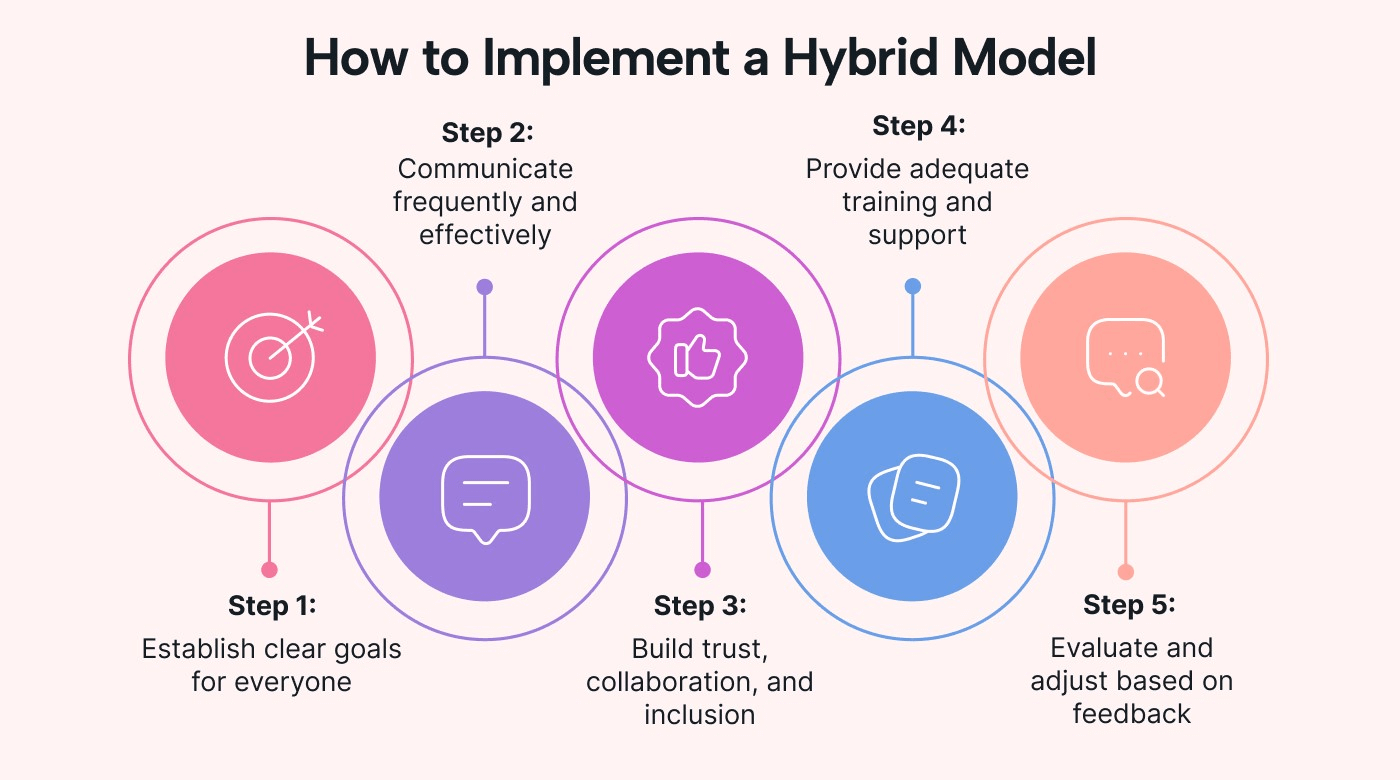 |
1. Setting clear goals and expectations
As with any enterprise shift, it’s crucial to have clear-cut goals for all stakeholders, whether remote or in-office. This helps ensure everyone is on the same page and moving in the right direction.
Action steps:
- Define each team member’s roles and responsibilities.
- Set measurable objectives and key results (OKRs) to track progress.
- Ensure all team members understand how their roles support the company vision.
2. Effective communication: The heartbeat of hybrid work
In the world of Scrum, daily stand-ups help to keep everyone aligned.
Similarly, in a hybrid model, frequent communication is the glue that binds the team.
Action Steps:
- Utilize a mix of communication tools, such as video conferencing and instant messaging.
- Schedule regular check-ins to discuss progress and address concerns.
- Encourage open feedback channels where employees can voice their opinions.
3. Cultivating trust, collaboration, and inclusion
Trust is the foundation of any successful team. In a hybrid setup, it’s even more vital to ensure everyone feels valued and included.
Action Steps:
- Promote a culture where results matter more than hours logged.
- Organize virtual work and team-building activities to foster camaraderie.
- Ensure all voices, whether from the office or from home, are heard and respected.
4. Training and support: Equipping your team
Team leaders should ensure that both remote and in-office workers have the tools and training they need to adapt to a hybrid setting.
Investing in productivity tools like Motion’s project management hub can help teams stay on the same page with workflows, no matter where they’re working.
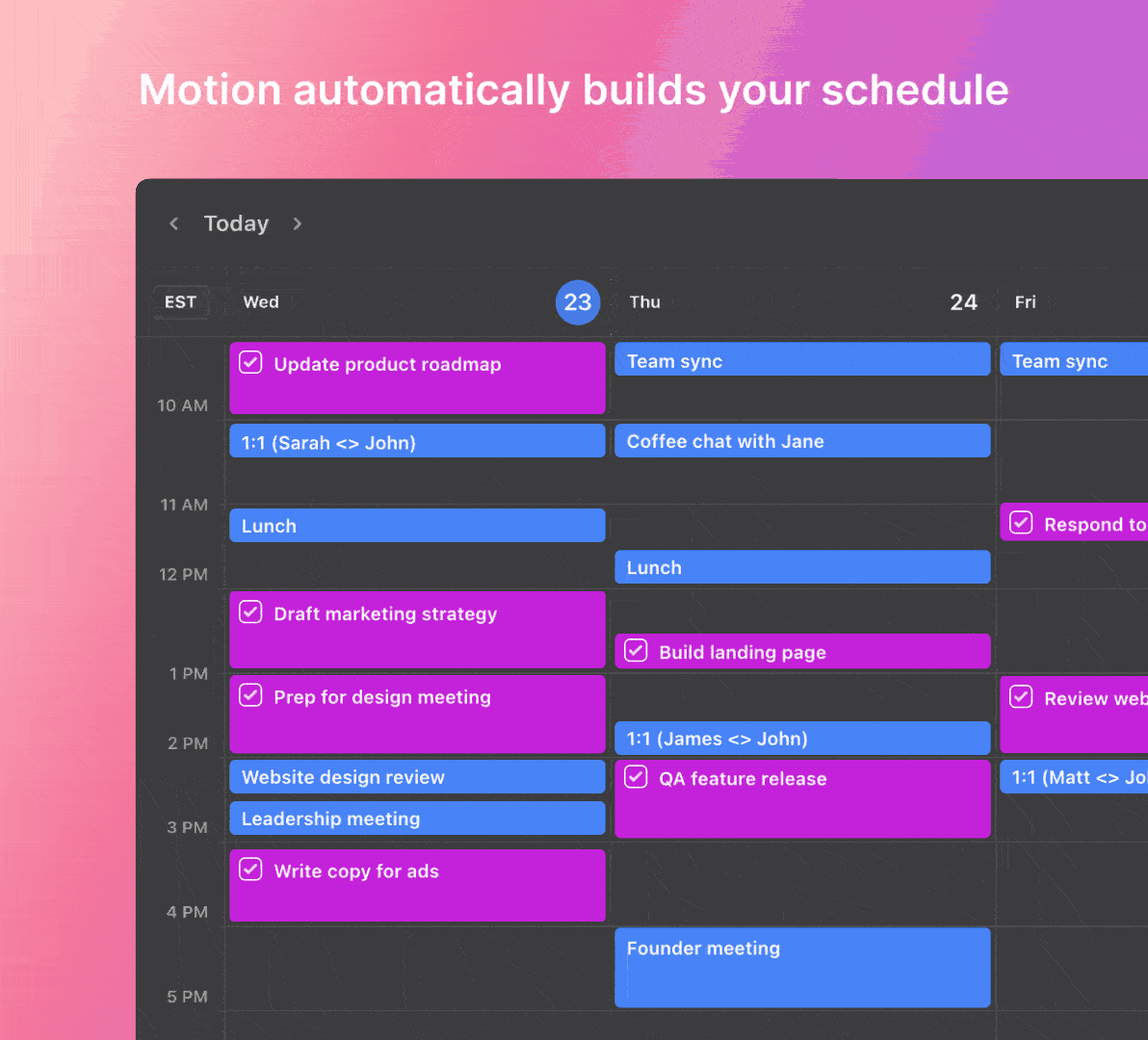 |
Action Steps:
- Offer training sessions on remote work tools and best practices.
- If possible, provide ergonomic office equipment for remote workers.
- Ensure in-office workers are equipped to collaborate with their remote counterparts.
5. Iterative evaluation: Constant refining
Successful business relies on setting goals, tracking progress, and changing the approach as needed. When implementing a hybrid workplace model, it’s vital to regularly evaluate the new model’s effectiveness and make the necessary adjustments.
Action Steps:
- Conduct periodic surveys to gather feedback from employees.
- Analyze data on productivity, employee satisfaction, and other relevant metrics.
- Adjust policies and strategies based on the insights you gather.
Remember, transitioning to a hybrid work model isn’t a sprint — it’s a marathon. While it’s filled with challenges, the right strategies and mindset can help you navigate the journey successfully.
Lead a hybrid work culture with Motion
With its blend of in-office and remote work, the hybrid workplace model presents unique challenges for traditional businesses. Coordination, communication, and task management become even more critical. That’s where Motion can play a pivotal role.
Motion’s AI-driven capabilities offer a structured approach to managing tasks and schedules.
Our Task Manager, for instance, integrates tasks into individual calendars, bridging the gap between remote and in-office work. This allows members to stay aligned with their teams from wherever they are.
As the hybrid model quickly becomes the norm, companies need to adapt to promote communication and synergy within a dispersed workforce. With Motion, the transition to a hybrid model can be smoother, more efficient, and better aligned with the needs of the modern office.
Try Motion for free today!

